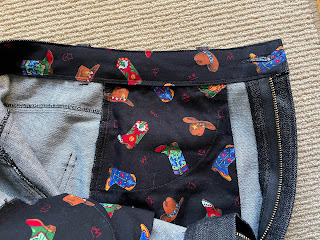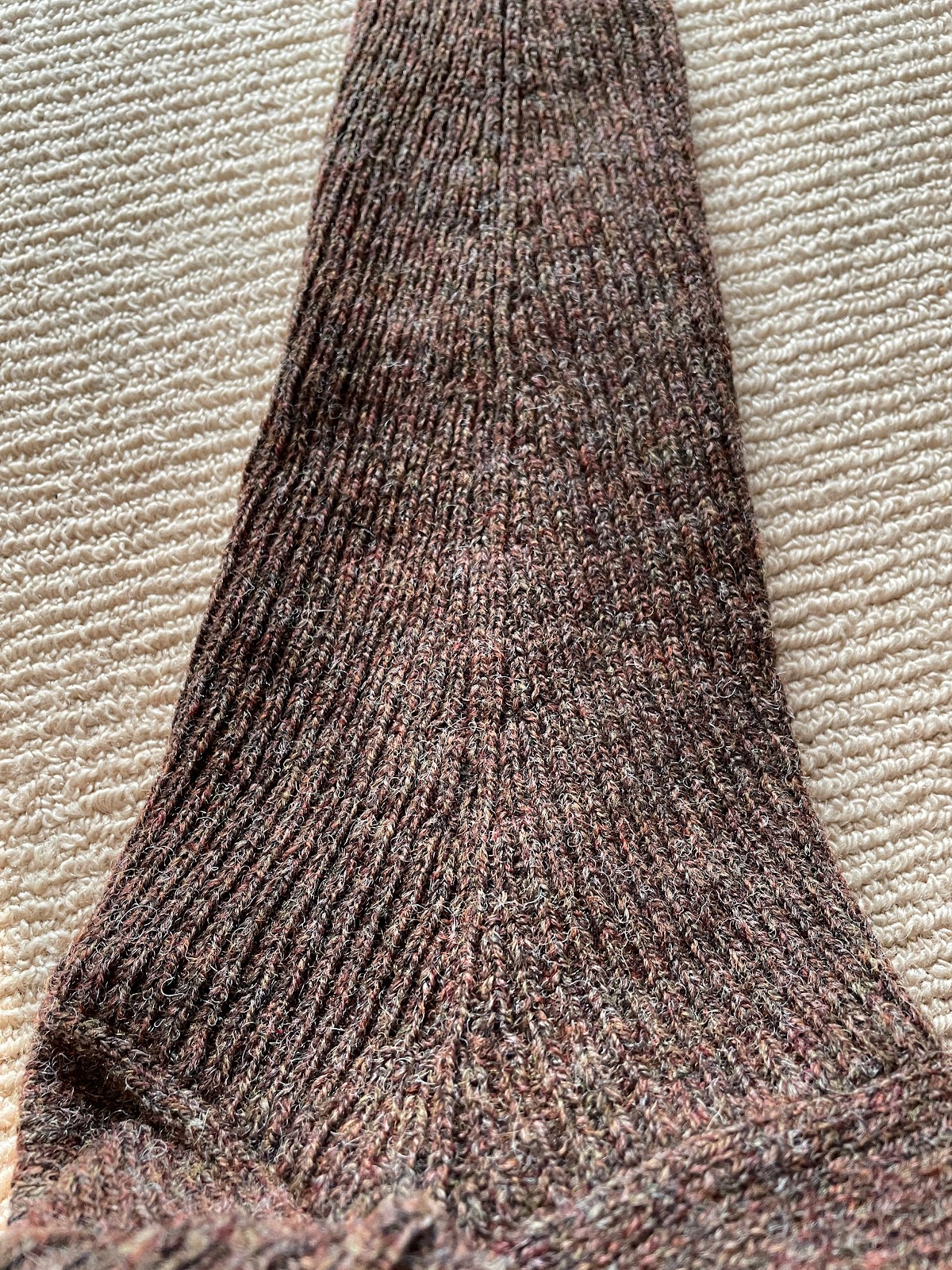So I'm making the Olya Shirt pattern in trial fabric found in stash. As with my last foray into indie shirt-land, I fell for this pattern as a result of seeing really lovely versions on line. Such as this one, from Love, Lucie.
I'm not finished yet, but felt moved to write about my experience wrestling with making the pockets as per the instructions. On further investigation, I realized that the vast majority of the versions out there (not Lucie's) had omitted them. Hmmm there must be a reason for that?
Yes! There is! The pocket instructions are (to put it charitably) almost incomprehensible as well as physically very difficult to accomplish. And yes, I do realize that there are tutorials and videos out there. Even on the Paper Theory website. But they did not help.
This doesn't need to be so, surely. The first time I made a blouse with pockets of this type was in the 1970s, using a Vogue American Designer pattern (#2281, Scott Barrie). I remade the same blouse in 2013. I sewed these pockes with French seams! Both times! With no problems!
The key difference between the Vogue pattern and the Olya shirt is that the Vogue pocket bags were cut on to both the yoke and lower front pieces, whereas the Olya shirt has separate square pocket pieces that have to be sewn to the yoke and lower front pieces.
So the Vogue instructions (pictured) were to sew these pieces together around the pocket bag. When assembled, the lower front pocket folds down, the upper pocket hangs down, and the seam allowances lie nice and flat all around the pocket and the yoke seam, pressed towards the hem of the shirt. The pocket is very fluid because there is no seam along its upper edge.
That's not what happens in the Olya shirt. Because it has separate pocket pieces, there are two separate seams at the top of the pocket. One seam is between the lower front and the pocket bag sewn to the lower front, and it is edge stitched on the pocket bag side and folded in on itself (seam allowances caught between the lower front and pocket bag.
The other attaches the second pocket bag piece to the yoke. The Olya illustrations say that after sewing these seams and understitching the lower front pocket bag, you are to sew the pocket itself WRONG sides together (sewing right up to the upper edge of the pocket bag) and then turn the pocket so the seams are enclosed within it. Then you are to sew the yoke seams (either side of the pocket opening). And then, somehow, you press the seam so that all seam allowances are ABOVE the pockets, where they will later be topstitched in the manner shown in the line drawing.
Okay, but this (at right) is what happens if you sew the pocket bags wrong sides together all the way to the top of the pocket bag, and then turn the pocket so the seams are enclosed within it, and then sew the yoke seam to either side.
We're looking at the yoke/pocket seam. The lower front/pocket seam is underneath. The pocket is to the top right of the photo and the yoke piece is on the lower left.
There is some nasty folding/wrinkling happening at the junction between the pocket bag and the yoke seam. There is no way that little sucker is going to lie nice and flat, even with careful pressing (which I admit to not having done for this photo).
Now the instructions say that you "might" need to clip into the seam allowance "for this to lay all flat and in place". But they are much less than clear as to what exactly you need to clip. Clipping wasn't going to solve the entire problem. Plus, as far as I could tell, the instructions wanted me to clip into the exact point where the yoke seam and pocket opening joined. I was worried this would weaken this critical point.
My fears were not allayed by further investigation on the Paper Theory website, which has a long set of tutorials on sewing this shirt. Here is their photo - sewing that seam after clipping right to that point without leaving a little hole at a critical point is not going to be easy.
So what did The Sewing Lawyer do?
The first step was to unpick the sewn-wrong-sides-together pocket bag. While I can appreciate the beauty of a pocket that has no cut edges visible on the inside, I couldn't see the point here, especially since the cut edges are not enclosed by a second line of stitching around the pocket bags. Rather, the seam allowances would be inside the pocket. I'd rather have them on the inside of the shirt.
The second was to serge the yoke seam edges because my fabric frays and I wasn't sure I was going to get a second chance.
Then I sewed the pockets right sides together, serged the pocket bag edges, and considered.
As you can see, the inner pocket bag (attached to the upper yoke) is lying nice and flat with its upper edge above the yoke seam. But the seam itself is open. What did I need to clip to get the seams to lie flat so they could be pressed up, ABOVE the yoke seam?
Just this. So simple. Clip into the seam allowance of the lower front piece, a bit to the side of the pocket opening. No stress on any critical point. No bubbles. No worries. Why couldn't Paper Theory just say so?






















































